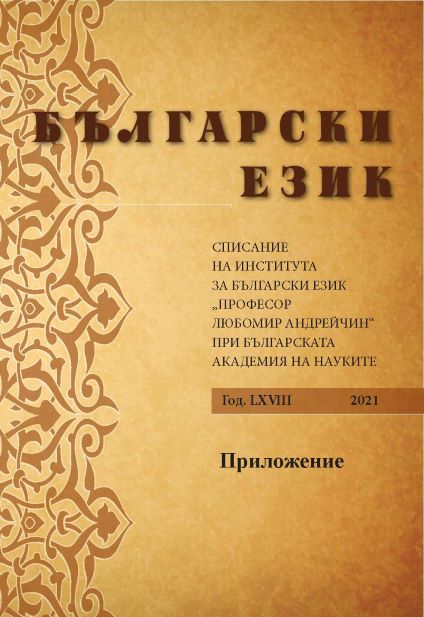ТРИЕЛЕМЕНТЕН СТРУКТУРЕН МОДЕЛ В НЯКОИ ИНДОЕВРОПЕЙСКИ МОРФОЛОГИЧНИ СИСТЕМИ КАТО ПРОЕКЦИЯ НА МИТОЛОГИЧНИТЕ ПРЕДСТАВИ И НА ЧОВЕШКОТО ПОЗНАНИЕ ЗА СВЕТА
A THREE-ELEMENT STRUCTURAL MODEL IN SOME INDO-EUROPEAN MORPHOLOGICAL SYSTEMS AS A PROJECTION OF MYTHOLOGICAL PERCEPTIONS AND HUMAN KNOWLEDGE OF THE WORLD
(WITH REFERENCE TO OLD BULGARIAN LANGUAGE)
Author(s): Borislav PopovSubject(s): Language studies, Language and Literature Studies, Theoretical Linguistics, Applied Linguistics, Philology
Published by: Институт за български език „Проф. Любомир Андрейчин“, Българска академия на науките
Keywords: Indo-European morphological systems; three-element structures; ternary model; binary model; mythological perceptions
Summary/Abstract: The paper presents part of the three-element structural theory elaborated upon via the mirror model. The motivation has been demonstrated that underlies the correspondences between major Indo-European three-element morphological systems and certain ternary mythological systems and systems of human knowledge. The phenomenon is foregrounded against the backdrop of the respective Old Bulgarian grammatical systems. The morphological systems emphasized in the study include: the three verb tenses, the three persons, the three main moods, the three genders, and the three numbers. At an earlier stage, during the period of Indo-European unity (as well as in the Hittite language) there was a binary model in some of the morphological systems subject to exploration, which, during the later period of Indo-European dialects, was transformed into a ternary one. This phenomenon re-emerges in the systems of a variety of ancient Indo-European languages, including Old Bulgarian. With other morphological systems, however, the three-element model occurs at an earlier stage – as early as the era of the Indo-European community. The projection of the mythological consciousness onto a number of Indo-European grammatical systems can be accounted for by the deep level interactions and mutual determination between language, mythology, and human cognition, which are interrelated by virtue of structures that generate each other. The foundation of the correspondences demonstrated here is formed by a unitary three-element archetypical model.
Journal: Български език
- Issue Year: 67/2020
- Issue No: Special
- Page Range: 46-62
- Page Count: 17
- Language: Bulgarian

